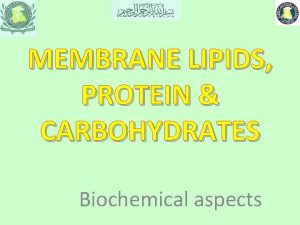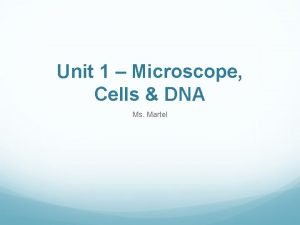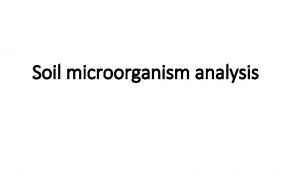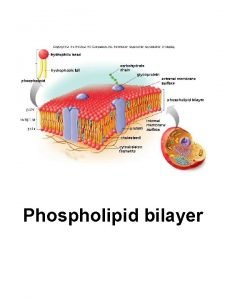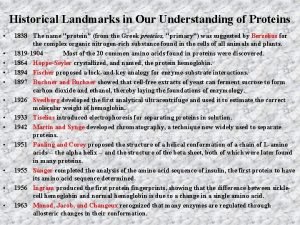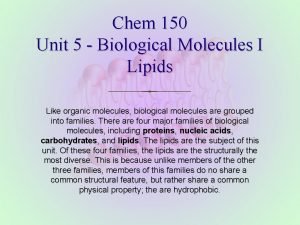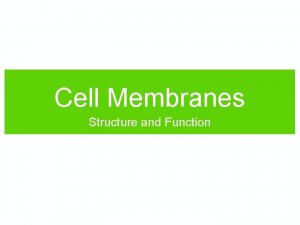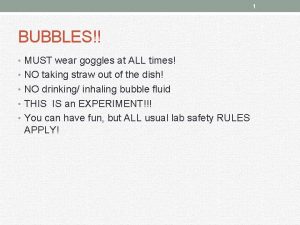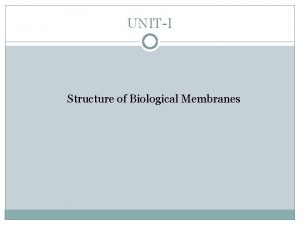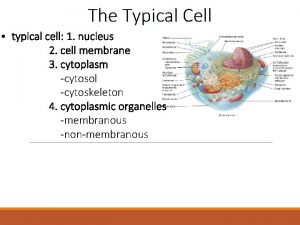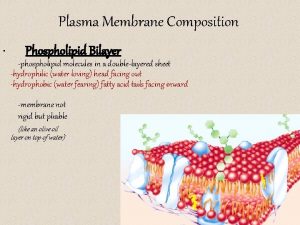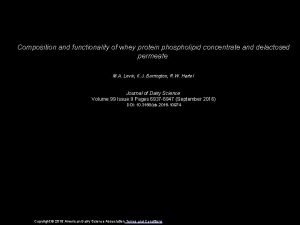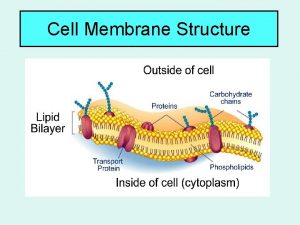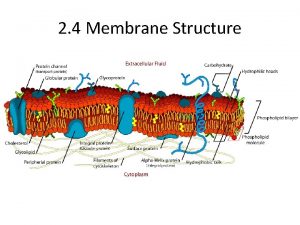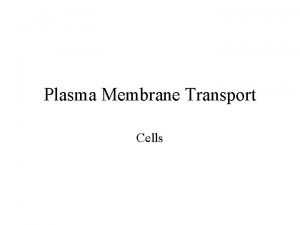Determining Structure and Composition of a Model Phospholipid











- Slides: 11

Determining Structure and Composition of a Model Phospholipid Bilayer ORANGE TEAM Monica Branco Suh Joon Han Matthew Helgeson Kathryn Krycka Jong Keun Park Chu Xiang

Phospholipid Bilayers • Phospholipid bilayers serve as biomimetic membranes • Lipids self-assemble into ordered, multi-layer structure • Our system: DMPC – Phospho-choline head group – C 14 hydrocarbon chains

Advanced Neutron Diffractometer/Reflectometer • Reflection of incident beam based on Bragg diffraction: Slit #1 monitor Slit #2 sample q monocromator Slit #3 ki kr 2 q detector θ 2θ Qz kt Slit #4

Experiment Objectives • Determine quantitative structural information – Bilayer thickness – Bilayer composition profiles – Solvent penetration – Extent of thermal fluctuation

Sample Preparation • • Deposition of lipid solution on glass slide Solvent evaporation Hydration of bilayer film in sample chamber (75% RH) Allow for sample equilibration at 37ºC I(Q) Glass slide Q (Å-1)

Determination of Bilayer Spacing 100% H 2 O 50/50 H 2 O/D 2 O 100% D 2 O n=1 I(Q) n=2 Phospholipid bilayer spacing: d = 49. 3 Å n=3 n=4 Q (Å-1) • Phase problem: n=5

Solving the Phase Problem • Variation of solvent conditions: H 2 O D 2 O 100% H 2 O 50/50 H 2 O/D 2 O 100% D 2 O I(Q) Q (Å-1)

Scattering Length Density Profiles • SLD profiles for lipid C-H chains:

Bilayer Composition Determination • Selective deuteration of solvent and lipid:

Water and Hydrocarbon Profiles • Subtraction of profiles allows for identification of species profiles: VCH 2=27 Å3 VCH 3=54 Å3

Conclusions • AND/R allows for detailed, quantitative structural and compositional characterization of biomimetic bilayers – Solving the phase problem – Selective contrast variation • Further experiments – Site-specific D-labeling – Protein incorporation
